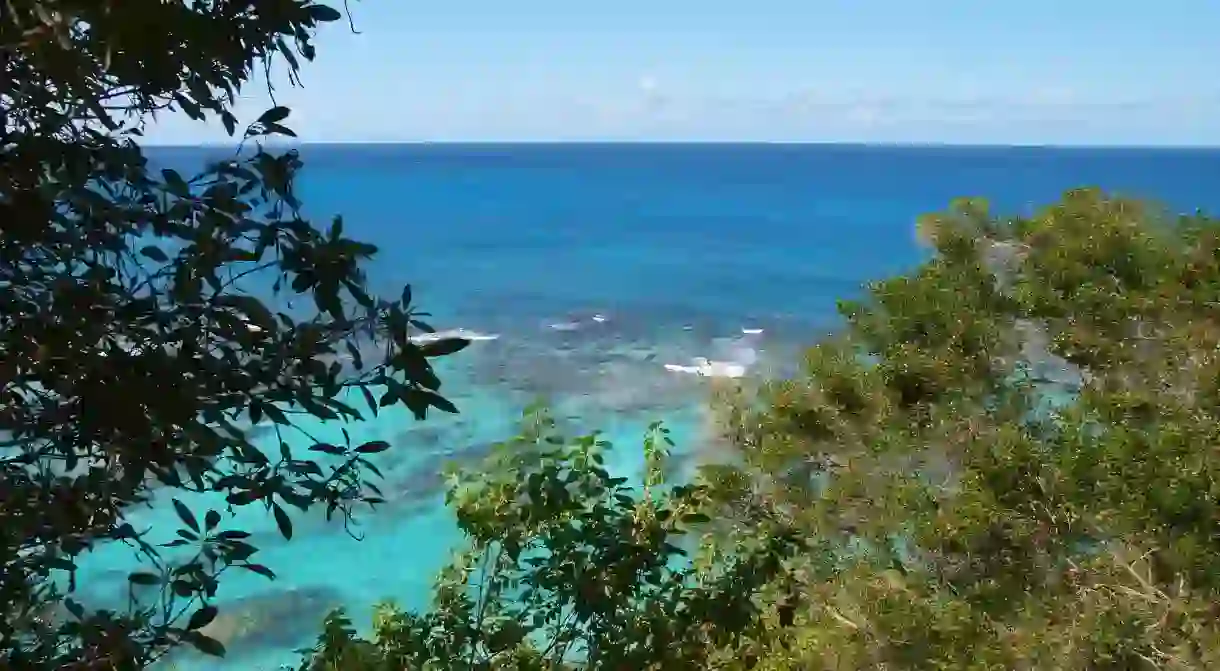The Ultimate Guide to Isla de Mona, the Galapagos of the Caribbean

The Isla de Mona, a small island off of Puerto Rico’s west coast, is a beautiful, uninhabited, and natural environment. That is why it’s commonly called the Galapagos of the Caribbean – which is no small compliment. Learn about this stunning location and start planning your visit right away.
Situated between Puerto Rico and the Dominican Republic, on the Isla de Mona – or Mona Island to give it its English name – there are many caves and a couple of beaches on the island, some of which are open to visitors. At the same time, it’s not the easiest island to travel to, and it is protected by the Puerto Rican government – which helps to explain why it’s uninhabited. A natural reserve, anyone who is allowed to visit needs to bring their own food and water, accommodations, and prepare for any eventuality they might think of as there are no island facilities.

It is believed that the Tainos were present on Isla de Mona, possibly for hundreds or even thousands of years. However, their population was negatively affected when the Spanish arrived and stripped the island’s natural resources. Eventually the island was used by pirates for provisions, and as a point of attack against their enemies. Afterwards, the Spanish and U.S. governments mined parts of the island until the U.S. military began using it, before control was returned to Puerto Rico who now maintain it as “a natural paradise.”
This tiny island is approximately six miles in length and four miles wide, and is a rich landscape for activities such as hiking, camping, caving, snorkeling and scuba diving among the island’s colorful coral reefs, fishing and hunting (of non-indigenous animals such as pigs and goats), and – because of its remote location and lack of invasive light pollution – it’s an ideal spot for star gazing.

The Isla de Mona is rich in biodiversity and island conservation; the Puerto Rico and Department of Natural and Environmental Resources and the U.S. Fish and Wildlife Service care for the island. They work to remove invasive species, and also protect endangered animals like the Mona ground iguana, Mona yellow-shouldered blackbird, and the higo chumbo cactus.
The Mona ground iguana in particular is native to the island, and not found anywhere else in the world. This type of iguana can grow to be around three to four feet (around a meter) long with two bulges on its head and horns by its snout.

To visit the island, it’s important to plan the trip well in advance: permits and transportation to the island are needed, and only 100 visitors are permitted at a time. There is one beach called Playa Sardinera, which is one of the most accessible beaches on the island. It is where police and rangers can be found, whose presence is to ensure the strict environmental rules are enforced: visitors must be careful of the flora and fauna on the island, making sure not to harm the habitat in any way.
In order to go diving at Isla de Mona, it’s recommended to take various steps. First, contact the Department of Natural and Environmental Resources to get permission to visit the island. Then hire professional dive boat operators to facilitate the diving, and prepare to camp at the island if you’re staying the night – regular permits allow for a stay of up to three nights. Finally, factor in your diving skill level – some currents around the island are more challenging. Then, take the plunge and enjoy the adventure.













